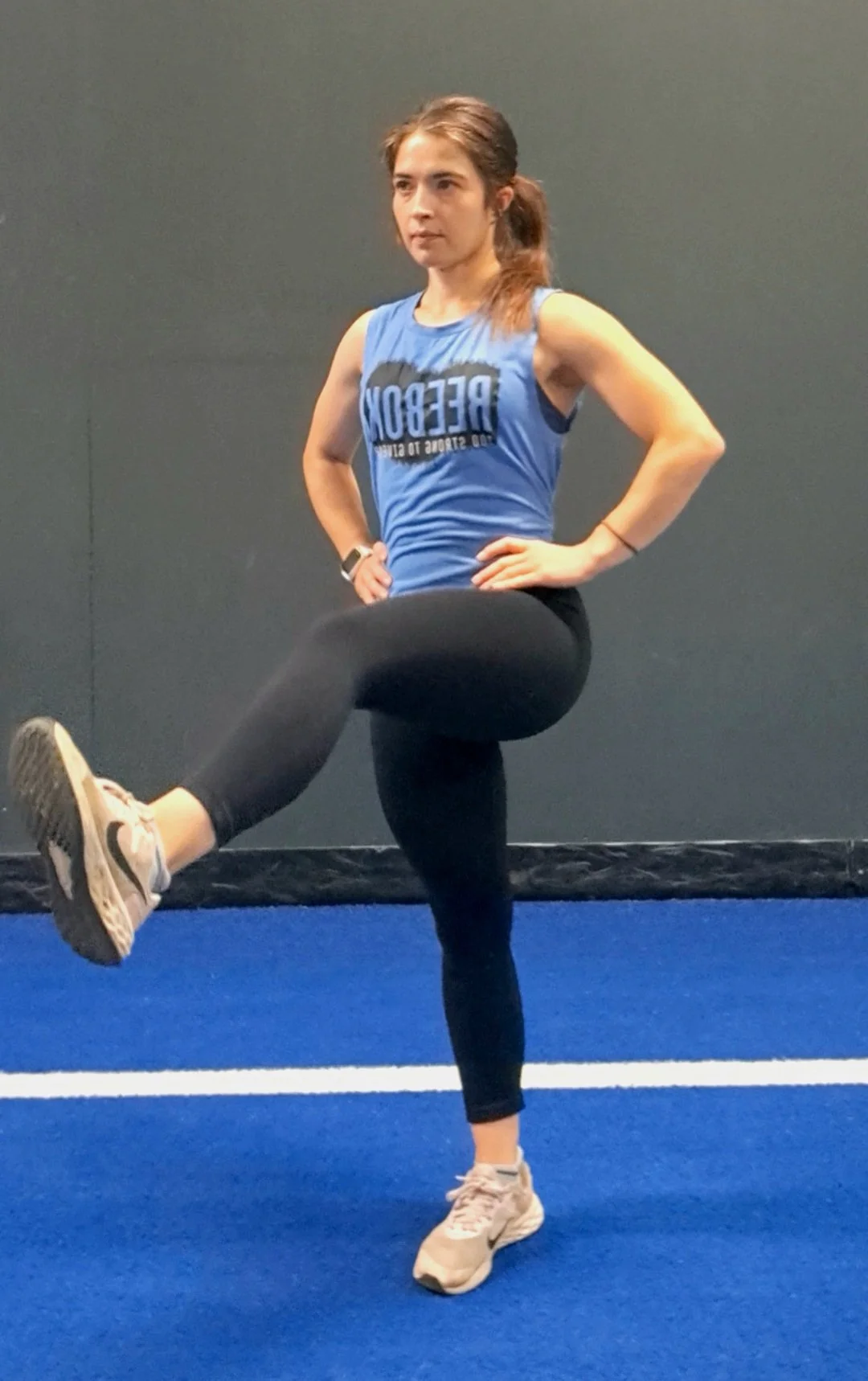Baby carrying and hiking stretches
Before
You’re packed and ready to hit the trail, or baby carry for a while, but hold on, just do one thing for me before you go. And that’s a warmup, a proper warmup to ensure your mind and body is ready to tackle this hike, and to prevent any injuries.
Now I’ve put baby carrying and hiking together, because that’s what I love to do, but they are incredibly similar tasks, especially when back carrying your baby.
Dynamic stretching
As part of your warmup, you’ll include some dynamic stretching and mobility work. Dynamic stretching is where you will take a specific joint through its full range of motion gradually, to ensure the joint is warm, lubricated and able to move at the extreme ranges. Mobility work often involves dynamic stretching.
Here are a few to add into your warmup:
Ankle circles - to prevent injuries from uneven ground, your ankles need to be able to move.
Calf raises - being a slow twitch muscle, the gastrocnemius and soleus can endure quite a lot, but need to be fully warmed up and ready to go to prevent injury.
Hip swings - a mobile, strong pelvis is the key to movement. Allowing the pelvis to move helps with agility and strength.
Lunges - slowly working through your full range at the ankle, knee and hip joint will help to lubricate them and work at their end ranges.
Back twists - moving your spine will help with balance and coordination, especially when on uneven terrain and your baby decides to lean sideways.
After
You’ve finished your hike, you’ve taken your little one out the carrier, put them in the buggy or car, or they’ve ran off somewhere. You’ve got them back, unloaded everything and just carry on with your busy life.
Yes we’ve all done that, I’ve done that many times, but I’m asking you to take 2 minutes after to stretch your upper body. You don’t need to do it straight away, you can stretch when you get back home, when the kids are strapped in the car, before you go to bed. But I promise you you’ll feel the benefits if you do.
Passive stretching
Stretching has many benefits for us, but there are a few different types. I’m going to focus on static passive stretching after a workout/exercise, in this case, hiking.
Static stretching involves taking a specific muscle to the point where you feel the stretch sensation, this is when the muscle is at it’s longest. It shouldn’t be painful but you may feel discomfort.
Ideally you hold this for 20 - 30 seconds to feel the discomfort slightly ease away. This is known as static passive stretching and is probably the one you are most used to seeing and doing.
The benefits of this type of stretching afterwards include:
Improved circulation around the body - enhancing your body’s ability to recover and reduce your muscles feeling sore
Mentally preparse you back to your resting state
Helps improve posture - a really important one after carrying your baby/toddler!
Improves flexibility of the muscle - a long muscle is a strong muscle!
Improves range of motion at that specific joint - helps to decrease the risk of injury and improves robustness
So now we know the benefits of stretching, here are a few you can do after a hike:
Quadriceps stretch - the quadriceps are the powerhouse at the front of your legs and will do most of the work when you are climbing uphill.
Hamstring stretch - the hamstrings are the powerhouse at the back of your legs and will help to keep your posterior chain strong.
Calf stretch - the calves (gastrocnemius and soleus) will be working the whole time you are walking and hiking. It is really important to not overload these muscles as you will definitely be feeling sore afterwards!
A gentle calf stretch can alleviate the soreness and return the muscle to it's resting length.
Pectorals stretch - it may not feel like it, but your chest, and pectorals, will be working when baby carrying to stabilise and almost counterbalance, the strong back muscles.
Latissimus dorsi (side) stretch - this will feel really good after taking off the baby carrier as the lats are used to keep your posture strong and stable.
Upper back stretch - your upper body, shoulders and rhomboids will be working hard to counterbalance the weight of your baby or toddler on your back, so stretching this area will help to alleviate tension.











